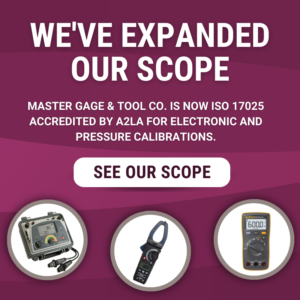From Good to Great: 10 Ways to Elevate Your Business with Effective Quality Assurance


Quality assurance is critical to a company’s operations. It helps your business maintain its reputation by ensuring consistent products and services. Effective practices can improve customer satisfaction, operational efficiency, and profitability. Whether offering a product or a service, adding quality control throughout the process will boost your value. This guide explores creating an effective quality assurance program for your organization.
1. DEFINE CLEAR QUALITY OBJECTIVES AND STANDARDS
The first step in effective quality assurance is defining clear objectives and standards. Creating a benchmark provides direction throughout your organization and ensures consistent results. Clear quality objectives and standards act as a compass, guiding teams toward the same goal. They help facilitate communication and cooperation across your business.
Furthermore, well-defined objectives and standards help an organization avoid noncompliance with industry regulations. By aligning with regulatory guidelines, you have safeguards to prevent your business from severe financial or reputational loss.
2. ESTABLISH ROBUST QUALITY PROCESSES AND PROCEDURES
Consistent quality is only possible with well-defined processes and procedures in place. They should cover every manufacturing process step, from initial concept to distribution. A framework enables standardized workflows and facilitates the effective execution of projects.
When you define the roles and responsibilities of team members, it builds accountability. This allows everyone to monitor their work, detecting potential problems early. A proactive approach minimizes negative impacts on the final product.
Indeed a quality assurance program is essential to operational efficiency and high-quality products. Continuous evaluation and refinement of processes elevate the quality of your products.
3. IMPLEMENT A DOCUMENTED QUALITY MANAGEMENT SYSTEM
Quality management systems (QMS) are essential for maintaining effective quality assurance practices. A well-organized QMS makes it easier for workers and managers to find what they need—information, procedures, or policies—and guarantees everyone follows the same rules. By documenting procedures, team members understand expectations and reduce errors and inconsistencies.
Additionally, a QMS helps companies meet industry standards and regulatory requirements. It gives your organization transparency, traceability, and accountability in quality-related activities. Therefore, helping you to identify potential risks before they become costly problems.
Above all, a QMS creates a culture of excellence throughout your organization, enabling you to track and measure performance. Implementing this system establishes a strong foundation for effective quality assurance.
4. TRAIN AND EMPOWER YOUR EMPLOYEES

A successful quality assurance program depends on your team. To uphold quality standards, invest in comprehensive employee training programs. Educating your employees gives them the tools they need to produce top-quality work.
Training also empowers employees to take ownership of their work and drive the company’s quality initiatives. They can contribute to quality assurance efforts with a better understanding of quality standards. For that reason, educate all employees from engineering to production to guarantee everyone understands the quality goals. This cultivates a shared commitment—which drives organizational success and customer satisfaction.
5. IMPLEMENT RISK MANAGEMENT STRATEGIES
Effective quality assurance requires a risk-management system. This involves identifying product quality risks, customer satisfaction, or regulatory compliance. Proactive risk management strategies mitigate risks and ensure quality assurance.
Begin by examining the risks associated with your operations and processes. Then, assess risks with suppliers, production, and technology. Try to prevent problems by anticipating them and acting before they occur. Minimize them by implementing process controls, training programs, and equipment maintenance protocols.
Always monitor and review your risk management strategies regularly to ensure their ongoing effectiveness. As your organization evolves, new risks may emerge—and existing ones may change—so you must stay vigilant and proactive when adapting them. Taking steps to manage risk demonstrates a company’s commitment to its customers, building public trust, and fostering sustainable growth.
6. CONDUCT REGULAR AUDITS AND ASSESSMENTS
Regular audits and assessments help you evaluate your quality assurance practices. Internal audits give organizations a chance to identify problems and correct them. Use these findings to improve your quality management system and drive continuous improvement.
Since auditing helps identify non-compliance and inefficiencies, it allows you to take prompt corrective measures. Upon addressing these issues, you can improve your quality management system and its ability to deliver consistent results. Revising procedures, providing additional training, and implementing preventive measures can all help address identified gaps or risks. Routine auditing creates a culture of accountability within your organization, driving it toward excellence.
7. FOSTER SUPPLIER COLLABORATION

Collaborating well with your suppliers is crucial since they influence the quality of your products or services. If you fail to communicate your expectations, you risk inconsistency. For that reason, keep an eye on your suppliers and ensure they maintain high-quality standards. Occasionally, check the company’s quality control measures and standards of production. Conducting audits provides an opportunity to verify compliance and identify areas for improvement.
Fostering collaborative supplier relationships goes beyond compliance. By involving suppliers early in the design and development stages, you can tap into their expertise—and reap the benefits of a better final product. Working with suppliers creates a smoother supply chain, improves quality control, and builds better relationships.
8. UTILIZE DATA-DRIVEN DECISION MAKING
Use data to improve the quality of your product or service. Quality management software can give you real-time visibility into your quality performance. It provides a centralized platform, making collecting, organizing, and analyzing quality-related information easier.
Data-driven decision-making helps you identify opportunities for improvement and take corrective actions. With quality data, you gain valuable insights into the patterns and correlations of your quality assurance practices. Embracing data can help you improve your organization’s quality standards and make better decisions that positively affect customer satisfaction.
9. ENCOURAGE CONTINUOUS IMPROVEMENT
Quality assurance is a never-ending journey. Encourage innovation in your company with an environment where employees feel comfortable suggesting improvements and driving change. Establish a system to collect and evaluate ideas for improvement, such as suggestion boxes or quality improvement teams.
When you give employees an active role, you instill a sense of ownership. Give them the freedom to identify areas for improvement, share their ideas with you, and implement changes in accordance with your standards.
Once your company has a culture that embraces change, it can succeed in an ever-changing market. Innovation becomes a way of life for employees, who seek better ways to do things and embrace excellence as part of their commitment.
10. EMBRACE CUSTOMER FEEDBACK

Feedback from customers is key to improving your quality assurance practices. Create opportunities for customers to share their opinions through surveys, comment forms, and dedicated complaint systems. Analyze and evaluate this feedback to identify common problems and address customer concerns.
Customer input can help companies gain valuable insight into their preferences and expectations. Listening helps you understand their needs and make smarter choices concerning them. Enlisting their help as a quality assurance tool ensures that you provide them with the products and services they want.
As a result, businesses that treat their customers well and make them feel valued get repeat business. With customer feedback, your company becomes more responsive to the needs of its customers.
LAST WORDS
Implementing these ten guidelines will help your organization maintain excellence in its operations. Make quality assurance a guiding force by constantly assessing and improving. By doing so, you’ll be able to differentiate your company from its competitors. Remember, quality assurance is not a short-term project but a mindset. Always seek ways to improve your performance and make excellence a habit.
CONTACT US TODAY
At Master Gage & Tool Co, we pride ourselves on being problem solvers who collaborate with our customers to create customized solutions that address their unique needs. With a wide range of equipment and services, we are well-equipped to improve operations in any industry.
If you want to learn more about how we can assist you, we invite you to contact us today. We create customized training programs based on your facility’s specific needs and the members of your staff. Our team is ready to provide you with the information and support you need:
Our Danville Office: (434) 836-4243
Our Greenville Office: (864) 447-5100
Or use our online contact form.
Don’t hesitate to contact us and take the next step towards enhancing your operations with our expertise and comprehensive solutions. We look forward to hearing from you soon.
